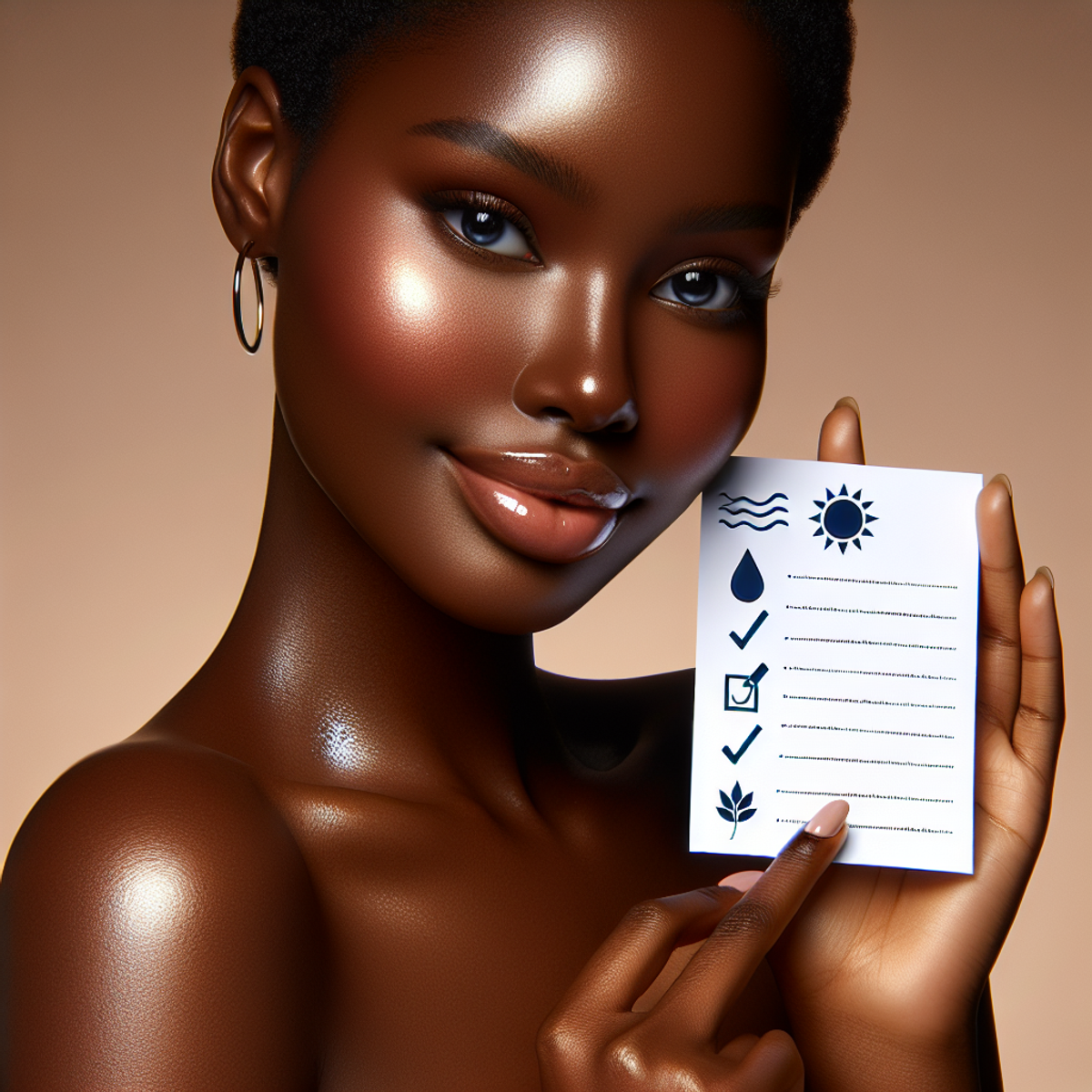How to Build a Skin Care Routine

Introduction
A skin care routine is an essential part of maintaining healthy and radiant skin. It involves a series of steps and the use of specific products to cleanse, nourish, and protect your skin. Building a well-rounded skin care routine is important because it not only helps to improve the appearance of your skin but also promotes its overall health and vitality. By addressing specific needs, you can tailor your routine to target concerns such as acne, dryness, or aging.
The Importance of a Well-Rounded Routine
A well-rounded routine means that you incorporate all the necessary steps to properly care for your skin, ensuring that it receives the essential nutrients and protection it needs. This includes:
- Cleansing: Removing dirt, oil, and impurities from the surface of your skin.
- Moisturizing: Hydrating your skin to maintain its natural moisture balance.
- Sun Protection: Shielding your skin from harmful UV rays to prevent sun damage.
- Treatment: Addressing specific concerns like acne or wrinkles with targeted products.
Understanding Your Skin’s Needs
Each person has unique skin characteristics and concerns. To build an effective skin care routine, it’s important to:
- Identify Your Skin Type: Determine whether you have oily, dry, combination, or sensitive skin.
- Recognize Specific Concerns: Take note of any particular issues such as acne, redness, or dullness.
By understanding your specific needs, you can choose products that are specifically formulated to target those concerns and provide optimal results.
Factors Affecting Your Skin
In addition to knowing your skin type and concerns, there are external factors that can impact the health of your skin:
- Weather Conditions: Adjust your routine according to seasonal changes like cold winters or hot summers.
- Lifestyle Choices: Maintain a balanced diet, exercise regularly, and get enough sleep for overall skin wellness.
- Environmental Pollutants: Protect your skin from pollutants by using a barrier cream or antioxidant-rich products.
By taking these factors into account when building your routine, you can ensure that you are providing your skin with the necessary care it deserves. With a well-rounded routine that addresses your specific needs, you can achieve healthier, more radiant skin.
Understanding Your Skin Type and Concerns
When it comes to building an effective skincare routine, understanding your skin type and concerns is crucial. This knowledge will help you choose the right products that cater to your specific needs. Here are some key points to consider:
Role of Skin Type
Your skin type plays a significant role in determining which skincare products are most suitable for you. There are four primary skin types: oily, dry, combination, and normal. Each has its own characteristics and requires different approaches to care.
Identifying Your Skin Type
You can easily identify your skin type at home using a simple method. Start by washing your face with a gentle cleanser and patting it dry. After an hour, observe your skin’s appearance and texture:
- Oily skin tends to have a shiny appearance and feels greasy to the touch.
- Dry skin often feels tight and may have flaky patches.
- Combination skin has oily areas, typically around the T-zone (forehead, nose, and chin), while other areas may be normal or dry.
- Normal skin has a balanced oil production and appears smooth and healthy.
Common Skin Concerns
In addition to knowing your skin type, it’s essential to be aware of common skin concerns that you may have. These can include acne, wrinkles, hyperpigmentation, sensitivity, enlarged pores, or uneven texture. Identifying your specific concerns will help you select products that target these issues effectively.
Choosing Suitable Skincare Products
Once you understand your skin type and concerns, it’s time to choose the right skincare products. Here are some tips:
- Cleansers: Look for gentle cleansers that cater to your specific skin type. For oily or acne-prone skin, opt for cleansers with salicylic acid or tea tree oil. Dry or sensitive skin types can benefit from hydrating cleansers that do not strip away natural oils.
- Moisturizers: Select moisturizers that provide adequate hydration without being too heavy or greasy. Lightweight, oil-free formulas work well for oily skin, while richer creams are beneficial for dry skin types.
- Serums: Serums are concentrated treatments that target specific concerns such as hyperpigmentation, fine lines, or dullness. Look for serums containing ingredients like vitamin C for brightening, hyaluronic acid for hydration, or retinol for anti-aging benefits.
- Sunscreen: Regardless of your skin type or concerns, sunscreen is a non-negotiable step in any skincare routine. Choose a broad-spectrum sunscreen with at least SPF 30 to protect your skin from harmful UV rays.
By understanding your skin type and concerns, you can customize your skincare routine to address your specific needs effectively. Remember to introduce new products gradually and monitor how your skin responds to them. If you’re unsure about which products to choose, consider consulting a dermatologist or skincare specialist who can provide personalized recommendations.
The Essential Steps of a Skincare Routine
A basic skincare routine consists of several key steps that should be done in the right order. Each step plays a crucial role in maintaining the health and appearance of your skin. Let’s dive into the essential steps of a skincare routine:
1. Cleansing
Cleansing is the foundational step of any skincare routine as it helps remove dirt, oil, and impurities from your skin. It prepares your skin for the application of other products and allows them to penetrate more effectively. When choosing a cleanser, consider your skin type and concerns:
- Foaming cleansers: Ideal for oily and acne-prone skin as they help control excess oil.
- Cream cleansers: Suitable for dry and sensitive skin as they provide gentle hydration.
- Gel cleansers: Great for combination and normal skin types as they offer a balance between removing impurities and maintaining moisture.
To cleanse your face properly, follow these steps:
- Wet your face with lukewarm water.
- Apply a small amount of cleanser to your fingertips or a cleansing brush.
- Gently massage the cleanser onto your face using circular motions, focusing on areas prone to congestion.
- Rinse thoroughly with lukewarm water and pat dry with a clean towel.
2. Exfoliating
Exfoliating is an important step in promoting cell turnover and revealing fresh, radiant skin. There are two types of exfoliants: physical and chemical.
- Physical exfoliants: These include scrubs, brushes, or facial sponges that physically slough away dead skin cells. Use them 1-2 times per week, depending on your skin’s tolerance.
- Chemical exfoliants: These include AHAs (alpha hydroxy acids) like glycolic acid and BHAs (beta hydroxy acids) like salicylic acid. They work by dissolving the bonds between dead skin cells, revealing a smoother complexion. Start with a low concentration and gradually increase as your skin adjusts.
Remember to exfoliate gently and avoid over-exfoliating, as it can disrupt your skin’s barrier function and lead to irritation.
3. Toning
Toning is often an overlooked step but is essential for balancing your skin’s pH levels and prepping it for subsequent product absorption. There are different types of toners available:
- Hydrating toners: These help replenish moisture and soothe the skin. Look for ingredients like hyaluronic acid or rose water.
- Exfoliating toners: These contain AHAs or BHAs to provide gentle exfoliation. They can be beneficial for acne-prone or congested skin.
To apply toner effectively:
- Pour a small amount onto a cotton pad or into your hands.
- Gently pat or swipe the toner onto your face and neck, avoiding the eye area.
- Allow the toner to fully absorb before
Customizing Your Routine Based on Age
A well-rounded skincare routine should be thought out and devised to cater to your skin and its specific needs. As you age, your skin goes through various changes, and it’s essential to adapt your skincare routine accordingly. Here’s a comprehensive guide on customizing your skincare routine based on different age groups:
Guidelines for Building a Skincare Routine in Your 20s
In your 20s, the focus is primarily on prevention and maintenance. This is the time to establish healthy habits that will benefit your skin in the long run. Here are some key points to consider:
- Sun Protection: Incorporate a broad-spectrum sunscreen with at least SPF 30 into your daily routine to shield your skin from harmful UV rays.
- Hydration: Opt for lightweight, non-comedogenic moisturizers to keep your skin adequately hydrated without clogging pores.
- Antioxidant Serums: Consider adding antioxidant-rich serums containing ingredients like vitamin C to protect against environmental damage.
Recommended Approach to Skincare in Your 30s
As you enter your 30s, you may start noticing early signs of aging, such as fine lines and loss of elasticity. Adjusting your skincare routine can help address these concerns effectively. Here’s what you should focus on:
- Retinol: Introduce retinol-based products to promote cell turnover and diminish the appearance of fine lines. This dermatologist-approved routine can be helpful.
- Eye Cream: Start using an eye cream with hydrating and firming properties to target under-eye puffiness and crow’s feet.
- Extra Nourishment: Consider richer moisturizers and hydrating masks to provide added nourishment for your skin.
Key Concerns to Target in a 40s+ Skincare Routine
In your 40s and beyond, the focus shifts towards combating more advanced signs of aging, including loss of elasticity, deep wrinkles, and uneven skin tone. Tailor your skincare routine by incorporating the following elements:
- Collagen-Boosting Ingredients: Look for products containing peptides or growth factors that can help improve skin firmness and elasticity. This study provides valuable insights into collagen-boosting strategies.
- Hydrating Formulas: Opt for deeply hydrating products such as hyaluronic acid serums and rich emollients to combat dryness and promote plumpness.
- Targeted Treatments: Consider incorporating targeted treatments like facial oils or intensive repair creams to address specific aging concerns. This research explores the effectiveness of different interventions.
By customizing your skincare routine based on age-specific needs, you can effectively address evolving skin concerns while maintaining a healthy and radiant complexion.
Maintaining Consistency and Seeking Professional Advice
Consistency is key when it comes to seeing results from your skincare routine. By following a regular regimen, you give your skin the opportunity to improve and flourish. However, staying motivated and consistent can sometimes be challenging. Here are some tips to help you maintain routine consistency:
- Set Clear Goals: Determine what you want to achieve with your skincare routine, whether it’s reducing acne, improving hydration, or minimizing fine lines. Having clear goals in mind will keep you motivated and focused.
- Create a Schedule: Establish a specific time each day for your skincare routine and stick to it. Whether it’s morning or evening, consistency in timing helps make it a habit.
- Keep Your Products Accessible: Organize your skincare products in a way that makes them easy to reach and use. This eliminates any excuses for skipping steps in your routine.
- Make It Enjoyable: Turn your skincare routine into a self-care ritual that you look forward to. Play calming music, light scented candles, or incorporate facial massage techniques to make the experience more enjoyable.
- Track Your Progress: Keep a journal or take progress photos to track the improvements in your skin over time. Seeing visible results can be incredibly motivating and encourage you to stay consistent.
While maintaining consistency is crucial, there may come a time when you need professional guidance for complex skin issues, such as melasma. Here are some signs that indicate it’s time to consult a dermatologist:
- Persistent Skin Problems: If you’ve been dealing with persistent acne, rosacea, eczema, or other chronic skin conditions without improvement, it’s wise to seek professional advice. A dermatologist can assess your skin condition and recommend appropriate treatments.
- Sudden Changes in Skin: If you notice sudden changes in your skin such as new moles, unexplained rashes, or unusual growths, it’s important to have them evaluated by a dermatologist. Early detection of skin cancer or other serious conditions is crucial for effective treatment.
- Severe Skin Reactions: If you experience severe allergic reactions or adverse side effects from skincare products, it’s essential to consult a dermatologist. They can help identify the specific ingredient causing the reaction and suggest alternative options.
- Aging Concerns: As you age, your skincare needs may change. If you’re concerned about deep wrinkles, loss of elasticity, or other signs of aging, a dermatologist can provide targeted treatments and guidance on anti-aging skincare routines.
Seeking professional expertise can offer numerous benefits for your skin health:
- Accurate Diagnosis: Dermatologists have extensive knowledge and experience in diagnosing various skin conditions. They can accurately identify the underlying causes of your skin concerns and recommend appropriate treatments.
- Personalized Treatment Plans: A dermatologist can create a customized treatment plan tailored to your specific skin type, concerns, and goals. This ensures that you’re using the most effective products and techniques for your individual needs.
- **Access to
In Conclusion
1. Personalized Skin Care Routines
As you conclude this journey of understanding and building a skin care routine, it’s essential to remember that your routine should be personalized to cater to your unique skin type and concerns. By integrating the knowledge shared, you can tailor a regimen that strikes a balance between addressing specific needs and maintaining overall skin health.
2. Importance of Consistency
Embracing a consistent skincare routine is key to achieving optimal skin health. Consistency allows your skin to adapt and respond to the products and treatments you incorporate. It’s through this dedication that you’ll begin to see noticeable improvements in the condition of your skin.
3. Knowing When to Seek Professional Help
While self-care is important, it’s equally crucial to recognize when professional expertise is necessary. If you encounter persistent or concerning skin issues that don’t seem to improve with your regular routine, it may be time to consult a dermatologist or skincare specialist. Their professional guidance can provide invaluable insights and solutions for complex skin concerns.
Remember, your skin is unique, and so should be your approach to caring for it. By maintaining a well-rounded routine tailored to your individual needs and seeking professional advice when needed, you can embark on a journey toward healthier, more radiant skin.
Final Thoughts
“In the end, developing a skincare routine isn’t just about applying products – it’s about understanding and nurturing your skin. Your personalized routine should reflect not only the current state of your skin but also its evolving needs as you age. By consistently following a tailored regimen and knowing when to turn to professionals for guidance, you can set the foundation for long-term skin health.”
Your journey toward healthier and happier skin begins with the choices you make today. So, take charge, embrace the process, and let your skincare routine be an expression of self-care and self-love.










